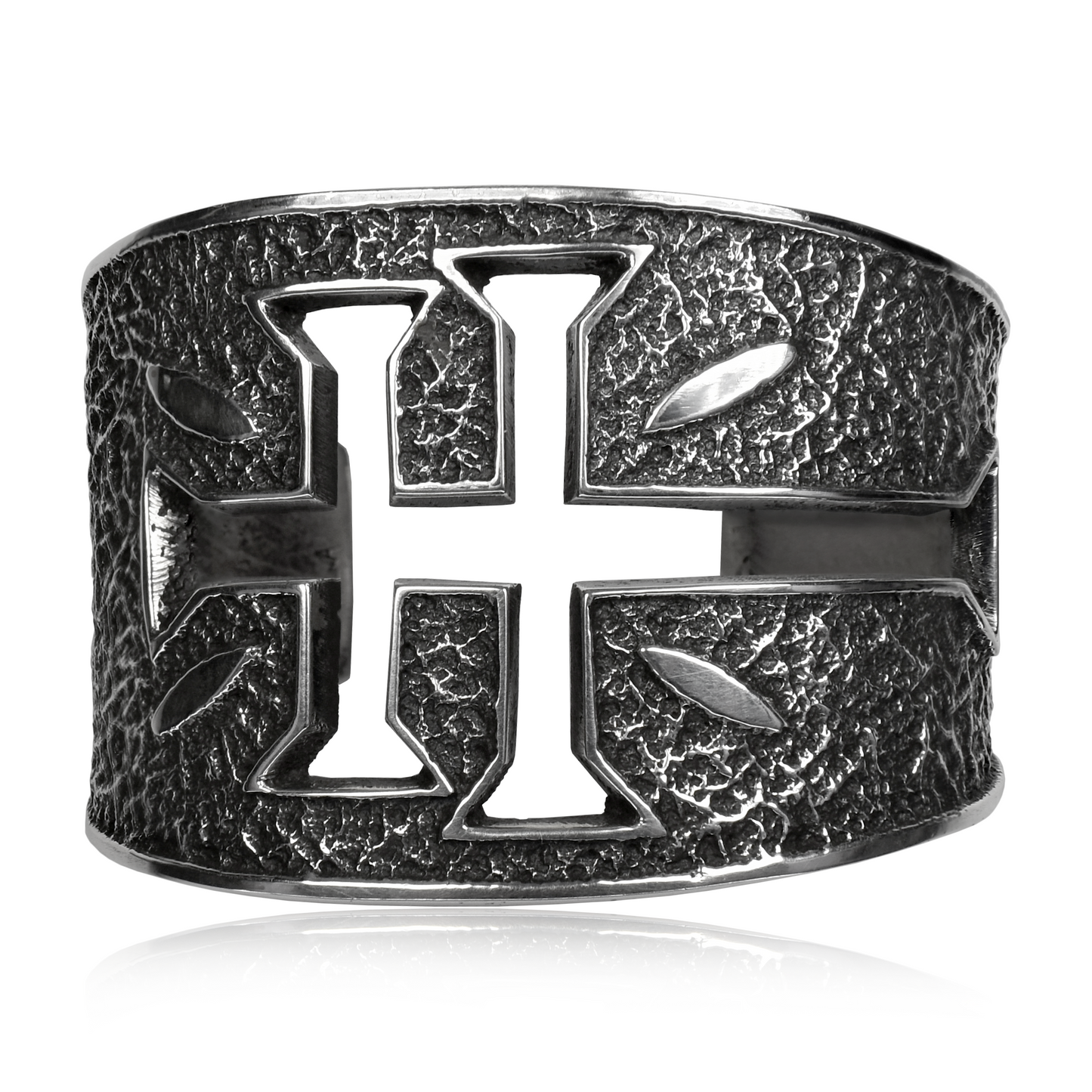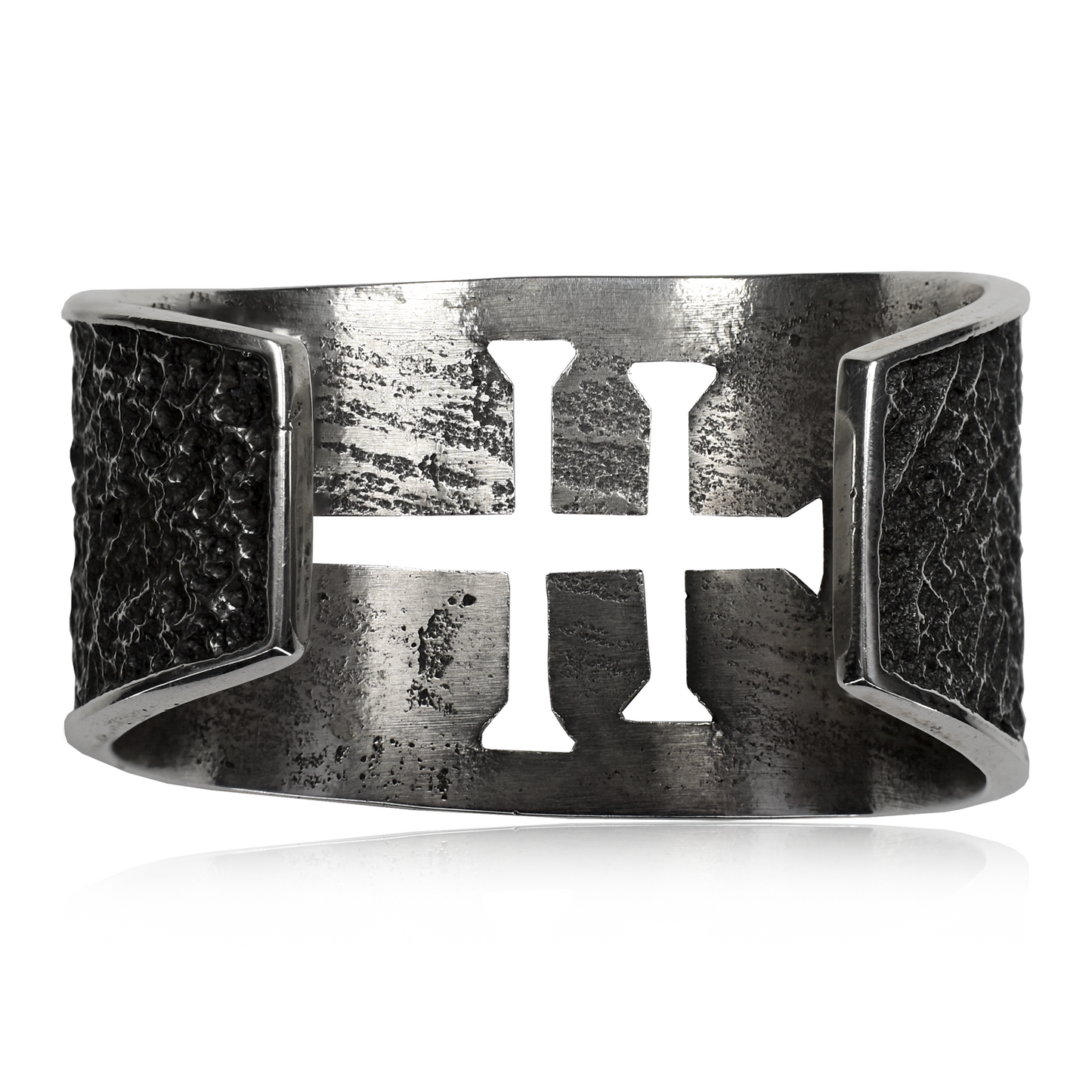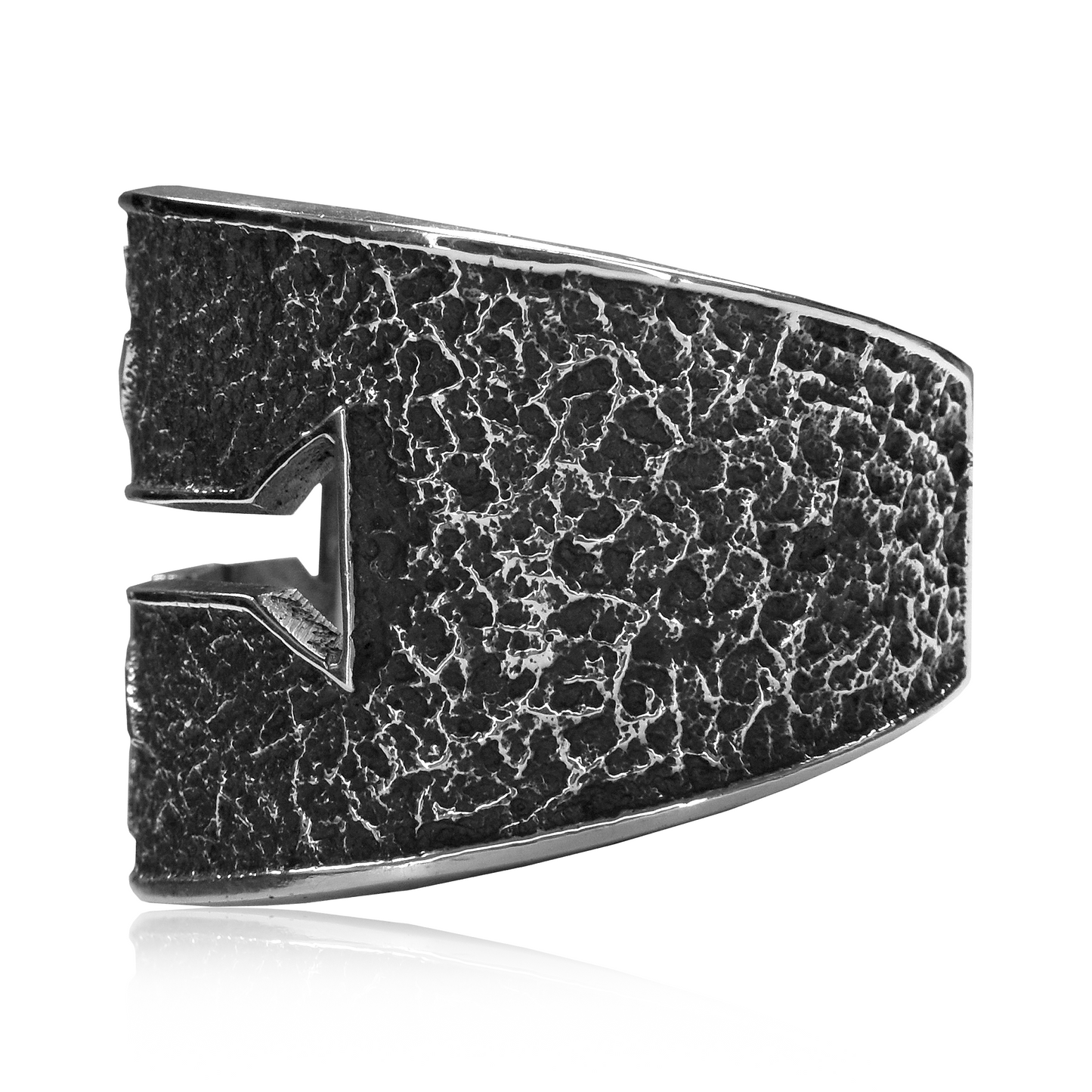Tufa Cast Dragonfly Cross Sterling Silver Cuff by Aaron Anderson
Tufa Cast Dragonfly Cross Sterling Silver Cuff by Aaron Anderson
Couldn't load pickup availability
Also called the Puebloan Cross, the Isleta Cross is a very old design associated with the Isleta Pueblo. The double-bar cross design is said to have originated with the Moors and Spaniards. The Pueblo Indians adopted the double bar cross as their own religious symbol, as to them it represented the dragonfly. A cross with two crossbars can be seen to have the appearance of a dragonfly hovering in the air with outstretched wings. In the Hopi and Pueblo tribes, the dragonfly was considered a medicine animal, associated with healing and transformation, whose spirit was often called upon by medicine men and women. Killing a dragonfly was considered highly taboo in the Pueblo tribes.
Sand casting, or Tufa casting, is a technique invented by Navajo silversmiths sometime between 1840 and 1860, whereby molten silver is poured into a mold carved into sandstone. It is a labor-intensive, hands-on process taking around three days from start to finish. The molds can only be used a few times before they are ruined by the heat from the molten metal.
This sterling silver cuff features a Dragonfly Cross cutout with four rays emanating from it surrounded by textured, patinaed sterling silver.
Dimensions: 2 1/2" wide, 1 3/4" high, 2" deep








